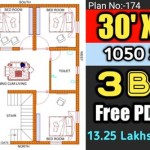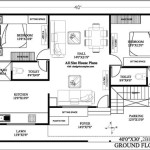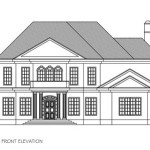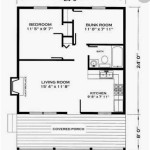Planning List for Building a House: Comprehensive Guide
Building a house is a significant undertaking that requires meticulous planning and attention to detail. To ensure a successful and stress-free project, it's crucial to create a comprehensive planning list that covers all essential aspects. This guide will provide an exhaustive checklist to streamline your planning process and set you on the path to building your dream home.
1. Site Selection and Acquisition
The foundation of your home begins with selecting and acquiring the right land. Consider factors such as location, neighborhood, amenities, utilities, and potential for future development. Research the area thoroughly to understand property values, zoning laws, and any potential environmental hazards.
2. Design and Planning
Once you have a site, work with an architect or designer to develop the blueprint for your home. Determine the number of bedrooms, bathrooms, and other living spaces you need. Consider the flow of the house, natural lighting, and views. Ensure the design aligns with your lifestyle and preferences.
3. Building Permits and Approvals
Building permits are required to ensure your home complies with local building codes and regulations. Contact your local building department to obtain the necessary permits and approvals. Submit detailed plans and specifications for review, and address any concerns raised by the authorities.
4. Budget and Financing
Establish a realistic budget for your project, including land acquisition, materials, labor, and other expenses. Explore financing options such as construction loans or mortgages to cover the costs. Ensure you have sufficient funds to complete the project and avoid any financial setbacks.
5. Contractor Selection
Choosing a reputable and experienced contractor is vital for a successful build. Interview multiple contractors, check references, and review their portfolios. Consider their experience, skillset, and ability to meet your specific requirements within the desired timeframe.
6. Material Selection
The materials used in your home will impact its durability, aesthetics, and functionality. Research different options for roofing, siding, flooring, cabinets, and other building elements. Consider factors such as cost, quality, energy efficiency, and maintenance requirements.
7. Utilities and Infrastructure
Ensure access to essential utilities such as water, sewage, electricity, and gas. Determine the location and capacity of your utilities and make necessary arrangements for connection. Consider energy-efficient systems and renewable energy sources to reduce long-term costs and environmental impact.
8. Landscaping and Outdoor Spaces
Don't neglect the outdoor spaces surrounding your home. Plan for landscaping, patios, decks, and other features that enhance your living experience. Consider privacy, drainage, and the integration of your outdoor areas with the interior of your home.
9. Interior Design and Decor
Once the structure is complete, focus on the interior design and decor. Choose paint colors, flooring, furniture, and accessories that reflect your style and taste. Consider the functionality and flow of each room to create a cohesive and comfortable living space.
10. Project Management and Communication
Effective project management is essential to keep the construction process on track and within budget. Establish regular communication with your contractor, architect, and other stakeholders. Monitor progress, identify potential issues, and address any changes or modifications promptly.
Conclusion
Building a house requires meticulous planning and attention to detail. By following this comprehensive planning list, you can ensure that your project proceeds smoothly and results in a home that meets your needs and exceeds your expectations. Remember to prioritize quality, seek professional advice when needed, and stay actively involved in the planning and construction process to achieve the best possible outcome.

Construction Budget Template Spreadsheet Com Templates

Construction Free Spreadsheet Templates

Free Construction Estimate Templates Smartsheet

Solved 1 Project Planning 40 Pts Consider The List Of Chegg Com

Tiny Project House Floor Plans Construction Sketchup On Wheels Blog

12 Basic Components Of A Building Structure The Constructor

A Step By Guide To The Home Building Process Newhomesource

Solved 1 Project Planning 40 Pts Consider The List Of Chegg Com

List Of Tasks For One Off Contractor Build Boards Ie Now Ye Re Talkin

Est House Plans To Build Simple With Style Blog Eplans Com








